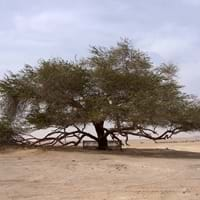Life Span
Perennial
Perennial
Origin
Eastern Europe
Southwestern United States
Types
Not Available
Prosopis chilensis, Prosopis juliflora
Number of Varieties
Not Available
Habitat
Terrestrial
Desert, Dry areas
USDA Hardiness Zone
4-9
6-9
Sunset Zone
1a, 1b, 2a, 2b, 3a, 3b, 4, 5, 6, 7, 8, 9, 10, 11, 12, 13, 14, 15, 16, 17, 18, 19, 20, 21, 22, 23, 24
Not Available
Habit
Clump-Forming
Arching/Fountain-shaped
Flower Color
Yellow, Lavender, Blue Violet
Yellow
Flower Color Modifier
Bicolor
Bicolor
Fruit Color
Not Available
Tan
Leaf Color in Spring
Green, Sea Green
Blue Green
Leaf Color in Summer
Green, Sea Green
Blue Green
Leaf Color in Fall
Green, Sea Green
Blue Green
Leaf Color in Winter
Light Green
Not Available
Leaf Shape
Lanceolate
Compound
Plant Season
Spring, Summer
Spring
Sunlight
Full Sun, Partial Sun
Full Sun
Type of Soil
Loam, Sand
Clay, Loam, Sand
The pH of Soil
Neutral
Acidic, Neutral, Alkaline
Soil Drainage
Well drained
Well drained
Bloom Time
Spring, Late Spring, Early Summer
Spring
Tolerances
Drought
Drought, Salt
Where to Plant?
Ground
Ground
How to Plant?
By dividing rhizomes, tubers, Seedlings
Grafting, Seedlings
Plant Maintenance
Medium
Medium
Watering Requirements
Average Water Needs, Do Not over Water
Keep ground moist
In Summer
Lots of watering
Ample Water
In Spring
Moderate
Moderate
In Winter
Average Water
Ample Water
Soil pH
Neutral
Acidic, Neutral, Alkaline
Soil Type
Loam, Sand
Clay, Loam, Sand
Soil Drainage Capacity
Well drained
Well drained
Sun Exposure
Full Sun, Partial Sun
Full Sun
Pruning
Remove damaged leaves, Remove dead branches, Remove dead leaves
Prune in early spring, Remove all watersprouts, Remove dead leaves
Fertilizers
All-Purpose Liquid Fertilizer
Use nitrogen rich soil
Pests and Diseases
Red blotch
Armored scales, Candidula scale, Flatheaded borers, Mealybugs, Mesquite girdler, Mesquite scale, Oldman longhorn, Roundheaded borers, Stem gall rust
Plant Tolerance
Drought
Drought, Salt
Flower Petal Number
Single
Not Available
Fragrant Bark/Stem
No
Yes
Foliage Texture
Coarse
Fine
Foliage Sheen
Matte
Matte
Attracts
Hummingbirds
Birds
Allergy
Skin irritation
Asthma, Rhinitis
Aesthetic Uses
Showy Purposes
Not Available
Beauty Benefits
Not Available
Improve hair condition
Environmental Uses
Air purification
Air purification
Medicinal Uses
Not Available
Conjuctivitis, Emetic, Eye Problems, Headache, Laxative, Pain in gums, Stomach aliments, Sunburn
Part of Plant Used
Not Available
Inner Bark, Leaves, Sap
Other Uses
Used as Ornamental plant
Used as a dye, Used As Food, Used for its medicinal properties, Wood is used for making furniture
Used As Indoor Plant
No
No
Used As Outdoor Plant
Yes
Yes
Garden Design
Alpine, Edging, Mixed Border, Rock Garden, Wall
Shade Trees, Street Trees
Botanical Name
IRIS pumila
PROSOPIS glandulosa
Common Name
Dwarf Iris
Mesquite
In Hindi
Dwarf Iris
उत्तर पश्चिमी अमरीका का एक फलीदार पेड
In German
Zwergiris
Mesquite
In French
Dwarf Iris
Mesquite
In Spanish
Enano Iris
mezquite
In Greek
νάνος Ίρις
Είδος μιμόζας
In Portuguese
Dwarf Iris
Mesquite
In Polish
Dwarf Iris
Mesquite
In Latin
Iris Dwarf
Mesquite
Phylum
Magnoliophyta
Magnoliophyta
Class
Liliopsida
Magnoliopsida
Family
Iridaceae
Fabaceae
Clade
Angiosperms, Monocots
Angiosperms, Eudicots, Rosids
Tribe
Irideae
Not Available
Subfamily
Iridoideae
Not Available
Number of Species
Not Available
Not Available
Properties of Dwarf Iris and Mesquite Tree
Wondering what are the properties of Dwarf Iris and Mesquite Tree? We provide you with everything About Dwarf Iris and Mesquite Tree. Dwarf Iris doesn't have thorns and Mesquite Tree doesn't have thorns. Also Dwarf Iris does not have fragrant flowers. Dwarf Iris has allergic reactions like Skin irritation and Mesquite Tree has allergic reactions like Skin irritation. Compare all the properties and characteristics of these two plants. Find out which of these plant can be used as indoor plant. If you are interested to decorate your house and garden, find out aesthetic uses, compare them and select the plant which will beautify your surrounding. Along with beautification, try comparing medicinal and edible uses of Dwarf Iris and Mesquite Tree and you can choose the plant having best and most benefits.
Season and Care of Dwarf Iris and Mesquite Tree
Season and care of Dwarf Iris and Mesquite Tree is important to know. While considering everything about Dwarf Iris and Mesquite Tree Care, growing season is an essential factor. Dwarf Iris season is Spring and Summer and Mesquite Tree season is Spring and Summer. The type of soil for Dwarf Iris is Loam, Sand and for Mesquite Tree is Clay, Loam, Sand while the PH of soil for Dwarf Iris is Neutral and for Mesquite Tree is Acidic, Neutral, Alkaline.
Dwarf Iris and Mesquite Tree Physical Information
Dwarf Iris and Mesquite Tree physical information is very important for comparison. Dwarf Iris height is 10.20 cm and width 15.20 cm whereas Mesquite Tree height is 760.00 cm and width 760.00 cm. The color specification of Dwarf Iris and Mesquite Tree are as follows:
Dwarf Iris flower color: Yellow, Lavender and Blue Violet
Dwarf Iris leaf color: Green and Sea Green
Mesquite Tree flower color: Yellow
- Mesquite Tree leaf color: Blue Green
Care of Dwarf Iris and Mesquite Tree
Care of Dwarf Iris and Mesquite Tree include pruning, fertilizers, watering etc. Dwarf Iris pruning is done Remove damaged leaves, Remove dead branches and Remove dead leaves and Mesquite Tree pruning is done Prune in early spring, Remove all watersprouts and Remove dead leaves. In summer Dwarf Iris needs Lots of watering and in winter, it needs Average Water. Whereas, in summer Mesquite Tree needs Ample Water and in winter, it needs Ample Water.





